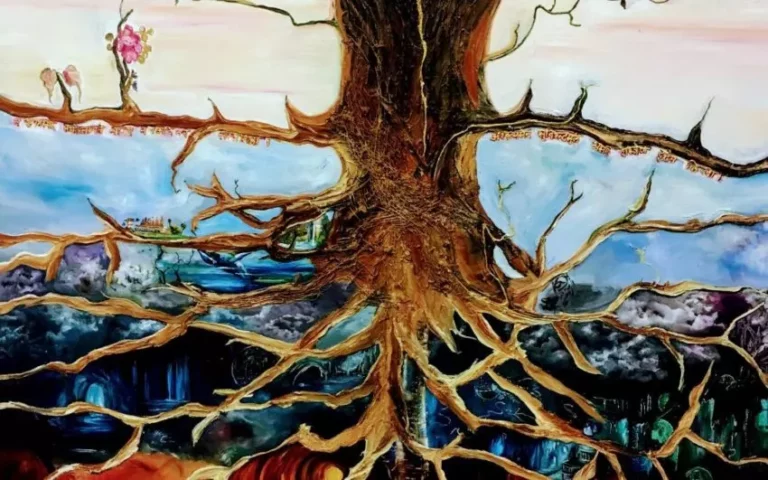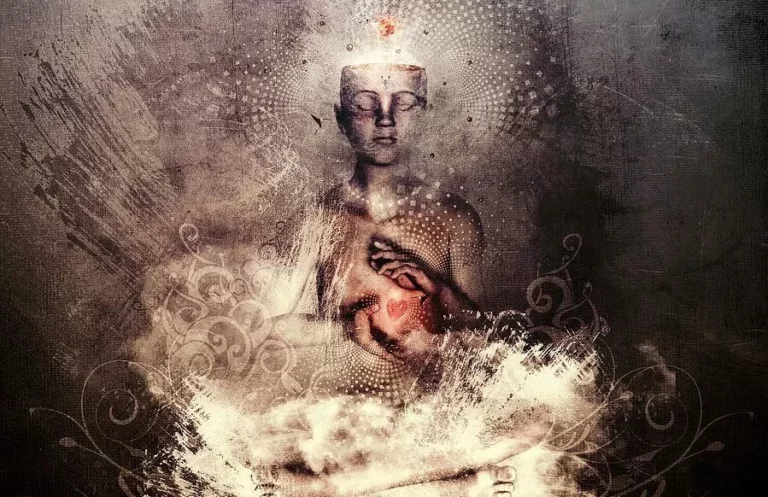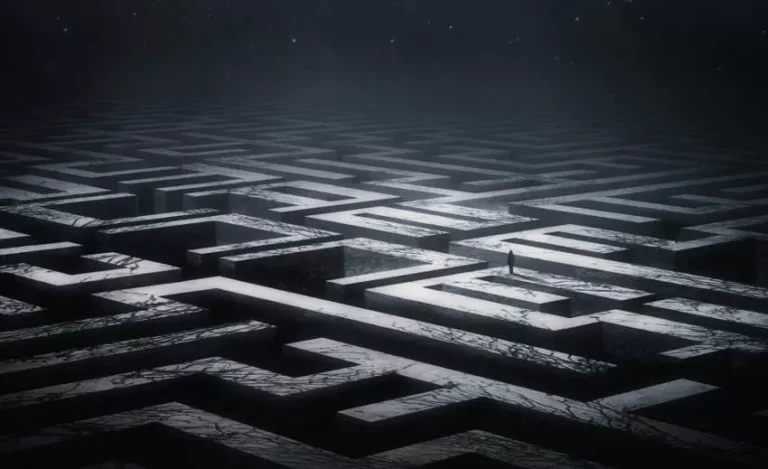Jiddu Krishnamurti (1895-1986) was a game-changing Indian philosopher. He was both an iconoclast and a humanist, focusing his considerable powers on psychological revolution, the nature of the mind, meditation, deep inquiry, human relationships, and bringing about radical change in society.
In his own words: “I am concerning myself with only one essential thing: to set man free. I desire to free him from all cages, from all fears, and not to found religions, new sects, nor to establish new theories and new philosophies.”
His influence became revoltionary when he withdrew from theosophy (particularly, The Order of the Star), noting, upon his dissolution, “I maintain that truth is a pathless land, and you cannot approach it by any path whatsoever, by any religion, by any sect. That is my point of view, and I adhere to that absolutely and unconditionally. Truth, being limitless, unconditioned, unapproachable by any path whatsoever, cannot be organized.”
Here are seven empowering lesson’s by JD Krishnamurti…
 1) “It is no measure of health to be well adjusted to a profoundly sick society.”
1) “It is no measure of health to be well adjusted to a profoundly sick society.”
This is perhaps his most famous quote. And perhaps his most misunderstood. I think it is misunderstood because it strikes at the heart of the human condition and it’s struggle between comfort, security and safety and health, courage and freedom. It creates a deep cognitive dissonance upon contemplation.
For how do we know if we’re living in a sick society or not? How do we figure it out? What’s the measure? Krishnamurti is trying to tell us that the measure is health. So is there a way to pinpoint why our society is unfit for healthy human beings attempting to evolve in a healthier way?
Yes. There are four critical ways to tell that we live in a profoundly sick society…
1) Our society pollutes the air it needs to breathe.
2) Our society pollutes the water it needs to drink.
3) Our society pollutes the food it needs to eat.
4) Our society creates unhealthy individuals it needs to evolve with.
The bottom line is this: a society that breathes polluted air, drinks polluted water, eats polluted food and then continues to do all the things that cause that pollution is a profoundly sick society. Krishnamurti’s quote is a powerful reminder of this vital fact.
2) “The ability to observe without evaluating is the highest form of intelligence.”
This is a modern spin on Aristotle’s ancient wisdom, “It is the mark of an educated mind to be able to entertain a thought without accepting it,” but it’s no less powerful for that fact.
Krishnamurti is standing on the shoulder of giants like Aristotle and the Buddha in order to penetrate more deeply into the human experience. “Observing without evaluating” is the essence of Buddhist detachment. Having this ability is empowering because it keeps the human mind in an open flow relationship with reality. It keeps the mind sharp and elastic regarding its relationship with cosmos.
A mind that can observe and then let go, is a mind that is less likely to get trapped in rigid and dogmatic constructs of thought.
3) “The more you know yourself, the more clarity there is. Self-knowledge has no end – you don’t come to an achievement; you don’t come to a conclusion. It is an endless river.”
Indeed. The Self is masks all the way down perceiving illusions all the way up.
The more you know yourself, the more you realize how much of yourself is unknown. Which is a deep and penetrating clarity into the human condition. It pinpoints the infinite depths of consciousness and eventually highlights the interconnectedness of all things through a profound sense of interdependence.
Self-knowledge is an “infinite river” leading to an even greater infinite ocean. Complete knowledge of the self is unattainable, but that doesn’t mean you shouldn’t try to obtain it. Enlightenment is equally unattainable, but there’s nothing wrong with striving for it. Self-improvement is healthy regardless of the fact that you will never be perfect.
The famous inscription at the Temple of Delphi, “know thyself,” still applies. You are the greatest teacher you will never completely know.
4) “Tradition becomes our security, and when the mind is secure it is in decay.”
On a long enough timeline even the most profound and comforting traditional wisdom can become a trap for the human mind. As James Russell Lowell said, “Time makes ancient good uncouth.”
Why is this? Because the only permanent is impermanence. The only unchanging truth is that things will always change.
Any tradition seeking to pigeonhole truth into a box will eventually lose touch with the underlying essence of cosmic change. Likewise, the mind that adheres to the security of such a box eventually decays into mindlessness and ill-reason, as the underlying essence of cosmic change inevitably passes it by.
All the more reason to stretch one’s comfort zone. All the more reason to meet rigid security with courageous freedom. Better to test the boundaries of cultural conditioning, however secure it might be within those boundaries, than to remain in a stagnant and dogmatic state void of imagination, creativity and progressive evolution.
5) “If you begin to understand what you are without trying to change it, then what you are undergoes a transformation.”
This is a penetrating insight into the concept of self-overcoming through the practice of No-mind. Understanding what you are is an unveiling of the Self; a kind of self-unbecoming.
Unbecoming everything is a way of counterintuitively becoming everything – with a twist. The twist being awareness. Albeit a non-attached awareness, more of a floating observation that merely interprets rather than judges.
Some call it No-mind. Some call it satori. Some call it ataraxy. Either way, unbecoming everything cuts the uninitiated ego out of the equation and then sneaks in the initiated ego, which utilizes Soul as a tool to leverage a heightened state of awareness.
From this heightened state of authenticity comes the deep interdependent realization that everything is connected to everything else. Inevitably, what you are undergoes a radical transformation without effort.
6) “Die to everything of yesterday so that your mind is always fresh, always young, innocent, full of vigor and passion.”
People all too often fall into a set way of doing things. They get too comfortable and overly complacent. They become attached to tradition. They cling to the safety and security of what they know. They lose sight of fresh insight. They fall into strict dogmatism.
“Dying to everything of yesterday” mixes things up. It challenges the Self, but it also challenges the contended onlookers, the fence sitters, and the vacillating bystanders. It frees us from the outdated delusions we have created so that we can create freshly updated delusions.
“Dying to everything of yesterday” is the personification of a walking meditation. It’s hands-on, in-the-moment interconnectedness, strategically questioning tradition so as to maintain innovation and guard against institutionalization.
Dharma can too easily become dogma. A “way” can too easily become a charade. A law can too easily become a façade. “Dying to everything of yesterday” is a seeking of authentic open-minded presence through self-overcoming.
7) “Freedom and love go together. Love is not a reaction. If I love you because you love me, that is mere trade, a thing to be bought in the market; it is not love. To love is not to ask anything in return, not even to feel that you are giving something – and it is only such love that can know freedom.”
Falling in love is both very easy and very difficult. It is easy when we are coming from a place of non-attachment and interdependence, but it is difficult when we are coming from a place of attachment and codependence. It’s the difference between being Love, and vainly trying to pigeonhole love into the box of our expectation.
True love must be free. The problem is most of us are conditioned to treat love in an ownership-based way. Love becomes a product that we consume. It becomes a trade. But true love is relationship-based not ownership-based. It’s not a product but a way of being.
The less we cling to love, the more we realize that we never owned it in the first place. It was never a thing that could be owned. It could only have ever been free, or it was never really love at all.
So, let’s learn to be Love in the face of expectation. Let’s be Love despite the love that thinks it needs validation. Let’s be Love even when others cannot. That is the heart of forgiveness.
Love authentically, let others love the way they must love, and then let go of your ego’s attachment to love. Do this, again and again, and the ability of free, soul-centric, self-actualized love will not elude you.
Image source:


















